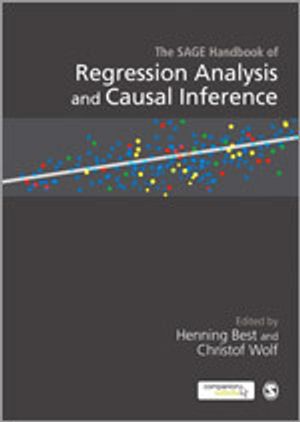Vi har bytt namn till Adlibris Campus! Campusbokhandeln ❤️ Adlibris - Läs mer här

The SAGE Handbook of Regression Analysis and Causal Inference | 1:a upplagan
- Inbunden, Engelska, 2014
- Författare: Christof Wolf, Henning Best
- Betyg:
Finns i lager i .
Beskrivning
'The editors of the new SAGE Handbook of Regression Analysis and Causal Inference have assembled a wide-ranging, high-quality, and timely collection of articles on topics of central importance to quantitative social research, many written by leaders in the field. Everyone engaged in statistical analysis of social-science data will find something of interest in this book.'
- John Fox, Professor, Department of Sociology, McMaster University
'The authors do a great job in explaining the various statistical methods in a clear and simple way - focussing on fundamental understanding, interpretation of results, and practical application - yet being precise in their exposition.'
- Ben Jann, Executive Director, Institute of Sociology, University of Bern
'Best and Wolf have put together a powerful collection, especially valuable in its separate discussions of uses for both cross-sectional and panel data analysis.'
-Tom Smith, Senior Fellow, NORC, University of Chicago
Edited and written by a team of leading international social scientists, this Handbook provides a comprehensive introduction to multivariate methods. The Handbook focuses on regression analysis of cross-sectional and longitudinal data with an emphasis on causal analysis, thereby covering a large number of different techniques including selection models, complex samples, and regression discontinuities.
Each Part starts with a non-mathematical introduction to the method covered in that section, giving readers a basic knowledge of the method’s logic, scope and unique features. Next, the mathematical and statistical basis of each method is presented along with advanced aspects. Using real-world data from the European Social Survey (ESS) and the Socio-Economic Panel (GSOEP), the book provides a comprehensive discussion of each method’s application, making this an ideal text for PhD students and researchers embarking on their own data analysis.